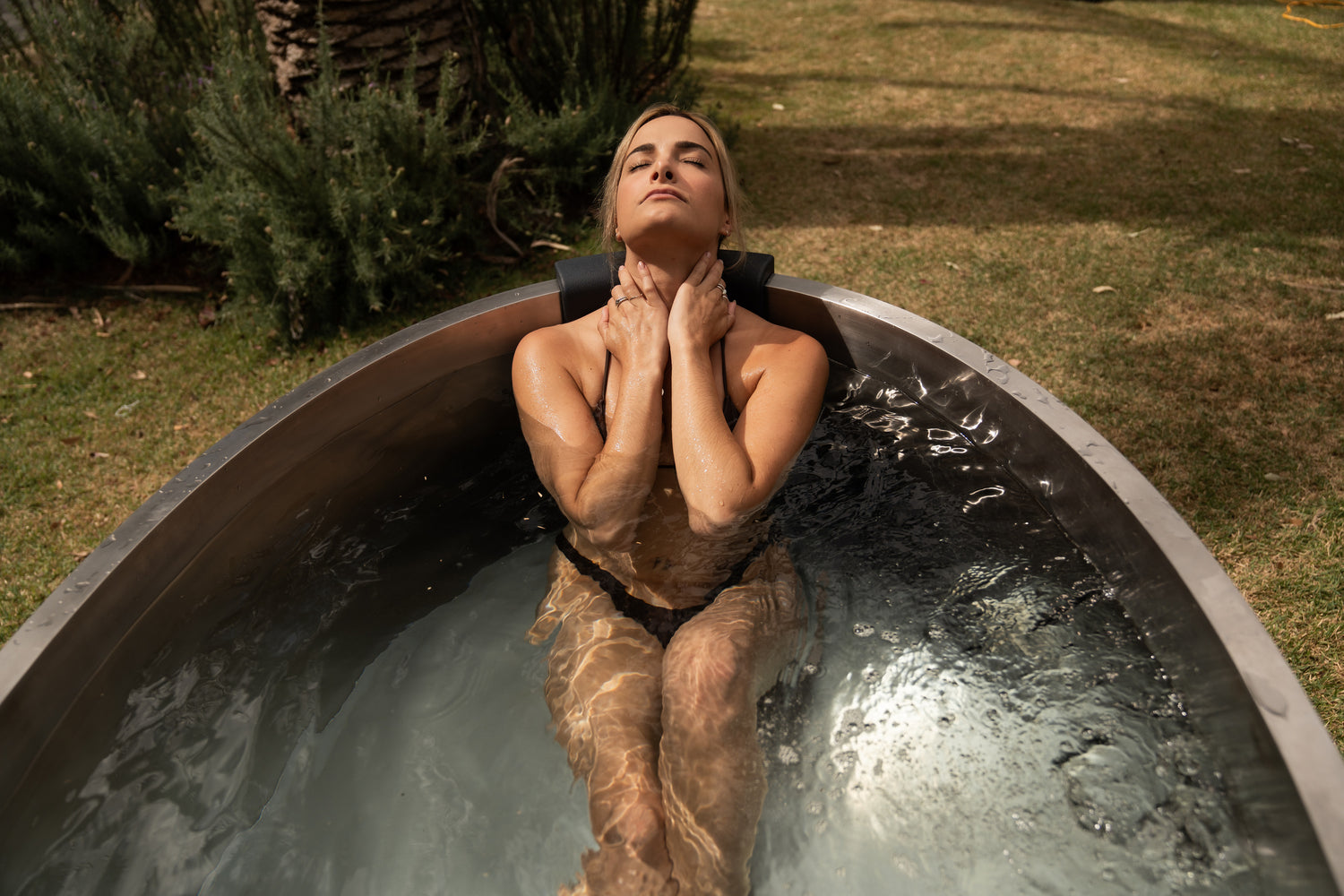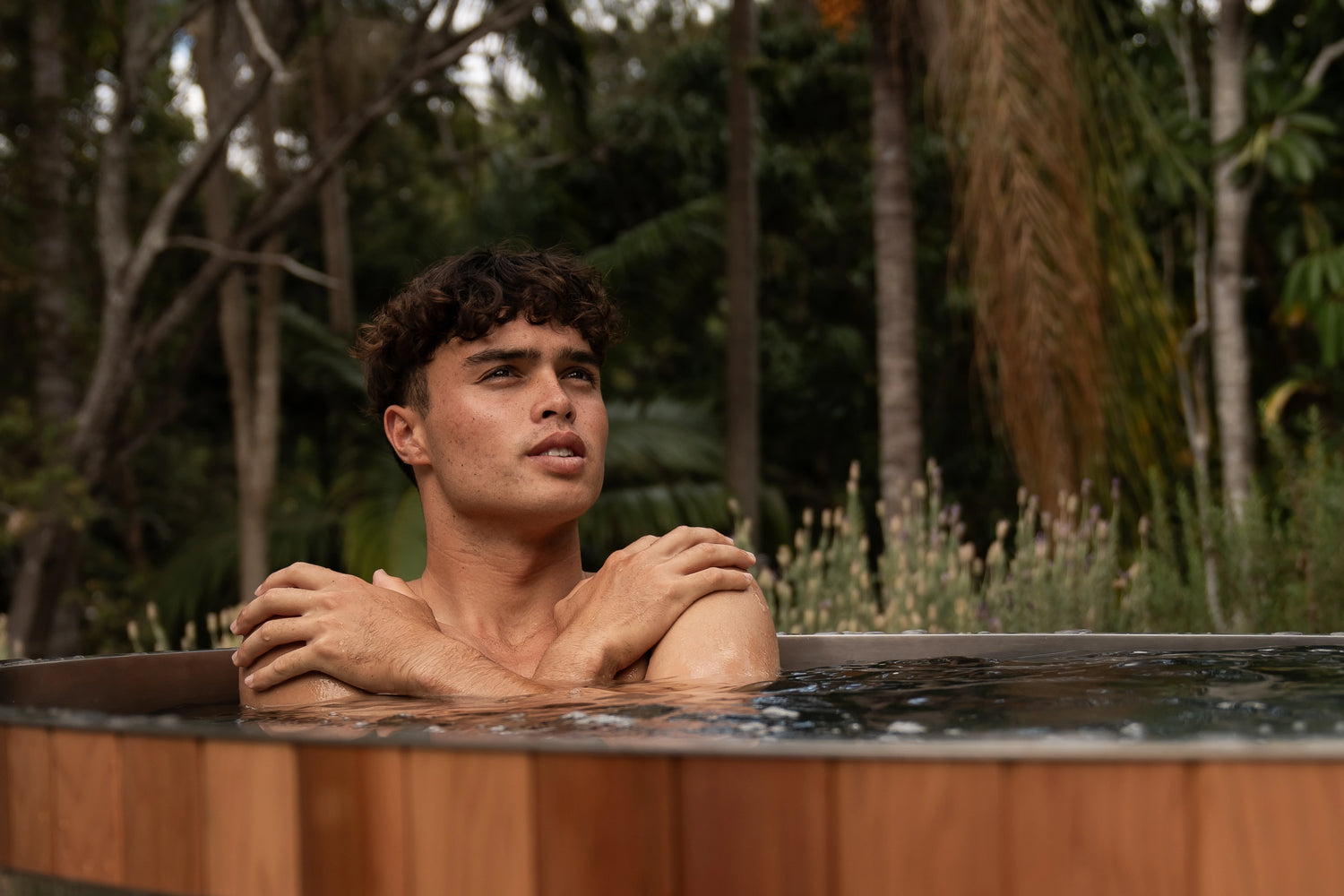ICE BATHS - THE SCIENCE
Cold water therapy, also known as cold hydrotherapy or cryotherapy - it is a therapeutic practice that involves exposing the body or specific body parts to cold water for a designated period. This practice is believed to have various health benefits and is used for recovery, performance enhancement, and general well-being. Cold water therapy can take different forms, including ice baths, cold showers, or immersion in natural bodies of cold water like rivers or lakes.
Learn about

Cold water therapy, or cryotherapy, is linked to the release of norepinephrine, a neurotransmitter and hormone. Studies, such as one in the "Journal of Clinical Endocrinology & Metabolism" in 2001, have connected exposure to cold with increased norepinephrine levels, indicating activation of the sympathetic nervous system. This activation leads to heightened circulating norepinephrine, with its role in vasoconstriction redirecting blood flow during cold exposure. This process may contribute to improved mood, increased alertness, and potential metabolic effects.
Cold therapy, including exposure to cold temperatures or cryotherapy, boosts the immune system through various mechanisms. Cold exposure stimulates the production of immune cells like neutrophils and lymphocytes, while activating brown adipose tissue releases cytokines that modulate immune function. The stress response triggered by cold exposure can lead to controlled release of cortisol, with immunomodulatory effects. Studies, such as one in the "International Journal of Hyperthermia" in 2020 and another in the "European Journal of Applied Physiology" in 2015, show that controlled cold exposure, like cold water immersion or cryotherapy, increases immune cell activity and white blood cell counts, suggesting potential immunostimulatory effects for a stronger immune system.
Research, including studies published in the "Journal of Clinical Investigation" in 2019 and "Diabetes" in 2014, provides evidence supporting the activation of brown adipose tissue (BAT) during cold exposure. The studies demonstrate that mild cold exposure significantly increases BAT glucose metabolism, indicating brown fat activation and potential energy release. Furthermore, the research suggests that cold-induced BAT activation is associated with improved glucose uptake and enhanced insulin sensitivity, highlighting potential metabolic benefits. These findings contribute to the understanding that cold exposure may trigger brown adipose tissue, offering insights into its role in energy expenditure and metabolic improvements.
Cold water immersion has been linked to increased antioxidant activity, as indicated by a study published in the "Journal of Science and Medicine in Sport" in 2014. This research found that cold water immersion enhanced total antioxidant capacity, suggesting a potential boost in the body's ability to combat oxidative stress. Antioxidants play a crucial role in neutralising free radicals, and this response to cold water immersion implies a mechanism by which the practice may contribute to cellular health and resilience against oxidative damage.
SAFETY PRECAUTIONS
Ice baths, also known as cold water immersion or cryotherapy, are a therapeutic practice that involves immersing the body, or parts of the body, in cold water for a specific period. While ice baths can offer various benefits, they may not be suitable for everyone. It's important to consider individual health conditions and consult with a healthcare professional before incorporating ice baths into a routine. Here are some general considerations:
- Always Supervise: Never leave children unattended near the ice bath, even with the cover on.
- Use the Cover: Always replace the insulated cover after use to maintain temperature and prevent unintended access.
- Monitor Water Levels: Do not overfill the bath, and ensure it is securely placed on a stable, level surface.
Who can use an Ice bath?

Our Ice Baths can be used by children from age 8 years and above. Children should not be permitted to play with the ice bath. Children and older adults may be more susceptible to temperature extremes, so caution is advised. Adult supervision is advised for those under the age of 18.
Pregnant individuals should avoid extreme temperature changes, including very cold water, without consulting their healthcare provider.
People with certain medical conditions, such as Raynaud's disease, cardiovascular issues, or respiratory problems, should consult their healthcare provider before attempting ice baths.
Each person's tolerance to cold varies, so it's essential to listen to your body and not push yourself too hard.
How to look after your ice bath, so it performs at its best!

It is common knowledge that water and electricity shouldn’t mix, so you and your loved ones are safe, please check that your local power supply meets the requirements needed and ensure you fit the electrical protection devices in compliance with local regulations.
For safety reasons, you should not replace or repair the chiller yourself. If the ice bath requires repairs, please contact us for assistance - we’re here to help!
While the ice bath is designed with safety in mind, it is important to always supervise children closely in environments where there is water. The ice bath comes with an insulated cover which should be used to cover the bath when not in use to prevent accidental access by children. Never leave the ice bath filled and unattended in areas accessible to children.
Maintaining water cleanliness is beneficial for both your health and that of your ice bath, ensuring you keep your ice bath clean from bacteria, offers a free-flowing and sanitary environment for all to enjoy. Even though bacteria tends to proliferate slowly in cold water, it is still present. If your ice bath water is contaminated, it can harbor a plethora of bacteria and pathogens, leading to filter blockages that strain the filtration system. Neglecting regular maintenance can result in pump damage and an increased risk of illness due to the bacterial load in the water.
Clean filters weekly; replace them monthly.
Clean filters daily; replace them weekly. For new filters, please contact us to make arrangements.If you need more information on how to change the filter, please see our manual.
Your safety whilst using the ice bath

For those new to ice baths, start the practice with shorter durations and incrementally extend the time as your body adjusts. Monitor the water temperature closely, aiming for a balance between therapeutic benefits and avoiding hypothermia—recommended water temperatures for beginners range from 10-15 degrees Celsius (50-59 degrees Fahrenheit).
We always recommend to avoid using an ice bath alone, especially if you are new to the practice. It's always a good idea to have an emergency plan in place. After exiting the ice bath, warm up gradually by using towels, warm clothing, or a warm room. Avoid sudden exposure to extreme temperatures ( don’t go and take a hot shower straight after or jump in a sauna).
Always prioritise your safety and well-being when using ice baths, and if you have any uncertainties or health concerns, consult with a healthcare professional before incorporating this practice into your routine.

